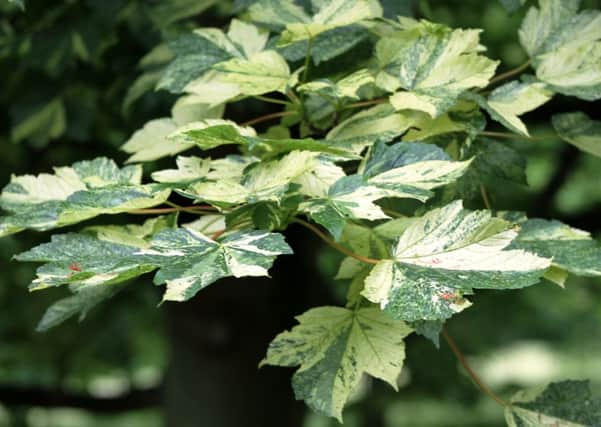A tree of many sizes


All may be true, but the sycamore still has its part to play in the greater scheme of things. Besides which, Acer pseudoplataus comes from a sizable family, many members of which are far more accommodating than their mighty cousin.
Unfortunately, it’s very easy to get tangled up in the many branches of the acer family tree. The sycamore is, in fact, a false plane, and it’s not to be confused with the Japanese acers or with the platanoides group which are, in fact, Norway maples.
Advertisement
Hide AdAdvertisement
Hide AdDid the invading Romans bring the sycamore with them, or is it native to Britain? It doesn’t really matter – Yorkshire hill farmers found out centuries ago that the tree makes an ideal windbreak, so they planted groves on the windward sides of their exposed homes.
Nowadays, few people have the space to plant A pseudolatanus, but there are plenty of smaller acers for modern gardens. Brilliantissimum, for instance, is smaller with eye-catching shrimp-pink young foliage that gradually turns green.
It’s comparatively slow-growing and should eventually top out at just 25ft or so – a quarter of the size of the mighty sycamore. Even so, it needs to be planted at least 25ft from any buildings because it can develop a considerable root system. On the other hand, ornamental acers, aka those Japanese maples, are much easier to accommodate. These elegant, small trees, many finely-divided foliage, come in a multitude of forms and colours – from standard green, to pinks and deep purples. And it autumn, they go out in a blaze of red and orange.
Many have a beautiful, arching habit and also look stunning as specimens for containers, and despite their delicate appearance, they are hardy little beasts and can usually put up with the worst of the British winter.
Advertisement
Hide AdAdvertisement
Hide AdThey like neutral or acid soil, and a sheltered spot away from cold, drying winds, which can burn their fine foliage.
And for something completely different, there are the likes of A griseum (the paper bark maple) with its stunning peeling red-brown bark, and the snakebark maple (A capillipes), which has green-and-white striped bark. Both will grow to 30ft in height.